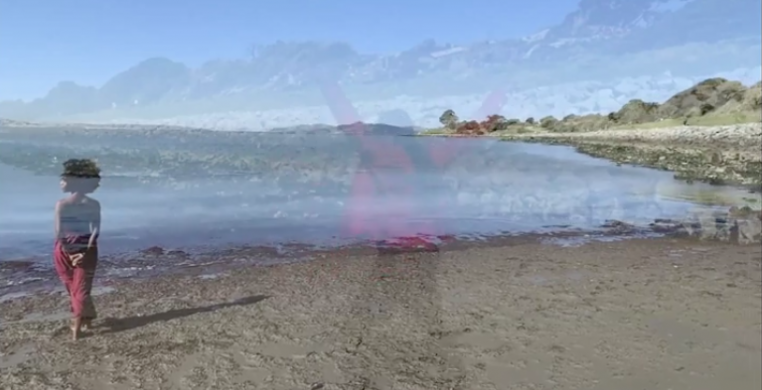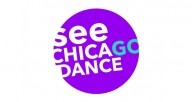The new, virulent delta variant of the coronavirus raises many questions, not only about a return to wearing masks, but to larger issues in the dance community around the emotional, physical and social safety needed for excellence in artistic practice. Because of various health factors, some folks in the disability community have yet to take their masks off. On the eve of the return to pre-pandemic life, we are reminded to slow down—to remember those left behind by access barriers. The lockdown removed some of those barriers and made participation possible for people through virtual events. Members in the disability community who are immunocompromised are constantly thinking about infection. How, then, do we return to “normal?” Whose responsibility is it to consider the safety of the whole in the dance community?
My screens have been filled with dancing bodies. Virtual performances allow me to see work by disabled dancers from around the world—although I crave live performances and have never been able to enjoy dance from the dinner table. July was Disability Pride month, and Chicago, the first city in the U.S. to have an annual disability pride parade, celebrated its fifteenth anniversary through a virtual parade. But as virtual events continue, the disability call “nothing about us without us” rebounds as the U.S. begins to close once again. I wonder what wisdom and creativity is lost by re-opening without the disability community? What has the arts community learned about access and art that will continue in a live dance world? Will we forget the pain of loss of the last year and a half of lockdown or will it linger, dancing in our souls?
Sitting at my table for the Screendance Club salon, I was joined by members of the local disability dance community to see what another dancer has been making during the lockdown. Screendance Club is a “radically casual” dance film watch party held once a month by See Chicago Dance, bringing dancemakers to the community through Zoom to watch and talk about dance film in a casual space. I was excited to see some of the local disability dance community join for the salon and the addition of access services such as ASL interpreters. This watch party was held on Zoom on Wednesday, July 28 to watch “The Spirit Dance with Me,” which was choreographed, filmed and edited by Antoine Hunter. Hunter identifies as African, Indigenous, Deaf and Disabled and is the founder and artistic director of Urban Jazz Dance Company, from the San Francisco Bay Area.
The film opens with Hunter wearing black pants and a red blazer, standing on a beach. The sand is dark and wet with a large wall of boulders running along the bay. In the distance, people and dogs walk along a trail of windswept green shrubs and pines, beyond them is a bright blue sky. Drumming sounds increase in volume as Hunter sways his arms and body side-to-side, rippling like the water as he turns to face and look at the camera, breaking the fourth wall with his gaze. The movement builds in speed and energy as he wiggles his body side to side rising and lowering by bending his knees. This force pulls his body back with steps opening his chest to the sky and arms to the sea. It’s like he is welcoming the viewer to take in the scenery and be present with him in this moment.
Viewers filled the Zoom chat with memories while watching the film—memories of what it feels like to be on a beach, or the metaphorical memories such as the environment and bodies always in flux, memories of dancing and touching someone resounded in the work. Hunter dances side-by-side with himself through a split screen, only to be left alone on the beach. He continues to dance as an image of the blurry Black body of Paunika Jones, a theater dancer from Harlem, in a red dress, is laid on top of his own. For me as a dancer, this moment represents my experience of the pandemic, where I, the environment and my memories partner with me. Later, Hunter described this sensation as “the spirit of the water interacting and communicating.” The water in the piece becomes the holder of murky memories of loss experienced during the pandemic. As he looks at the camera and opens his hand out to the sea it’s as though Hunter is welcoming me to reflect.
Thinking about the re-opening, reflection scratches at the surface of this notion of safety. The pandemic has laid open the dangers that disabled, sick, mad, Deaf, queer, Black, Brown and Indigenous people have always known.
“Fear is related to water,” Hunter says. Though he is reflecting on collective memories of socializing in the water as a child, a new fear lingers. What, where and with whom is it safe to dance and to make dance? He talks about having to clear the beach of trash, shells and seaweed before he filmed the piece. This led to him noticing trash in other environments and picking it up. We have been given an opportunity to be aware of the dance environment. Who are we inviting in? Who is showing up and who isn’t?
“The Spirit Dance with Me” was shot on a beach in Berkeley (Ohlone lands). You see the outline of San Francisco and the Golden Gate Bridge’s red arches jutting into a sunny sky. With face masks on and in water to their knees, Hunter lifts Jones over his head. Drops of water run back into the bay. This scene is repeated before we are given the satisfaction of seeing tiny ripples form in the water as Jones tilts her head to the sky. Hunter describes the work as “trying to understand going back to water.” Those ripples linger in the water but then dissipate and eventually we are left with an empty beach. It’s up to us to decide what we will do with our newfound understanding: Who in the dance world will continue to think about the safety of their dancers? Will we consider disabled/Deaf audiences and offer access as a part of the artistic product?
Reflecting on this piece led to the realization of a deep loss that is held in my soul. Unlike Hunter, I have yet to decide what I could physically express about the last year and a half. My responsibility to my fellow artists is to consider their access needs throughout the process, and what environments I am choosing to work in to ensure their safety.
Hunter ended our conversation by reflecting, “I just make an investment to art and an investment to access… both of them together, A.A., Access and Art.” I hope that A. and A. are the lingering gift that this lockdown has given to the disability community.
--
Check out how Urban Jazz Dance Company is approaching Access and Arts in The Bay Area International Deaf Dance Festival, Aug. 13-15, with workshops, performances and special events. Tickets range from $0-25. The festival will be virtual with performances from dancers in Germany and Australia. Check out their website for more information.
"Screendance Club: a radically casual watch-party, discussion of short dance films" takes place monthly. The next session, on Aug. 25, will be moderated by Jean Louise Osberger in conversation with Jason Jonas The Company. To register, click the event link below. To receive information about Screendance Club and other See Chicago Dance initiatives, sign-up for our newsletter.


